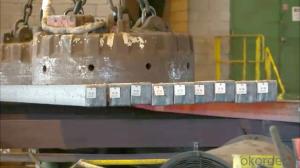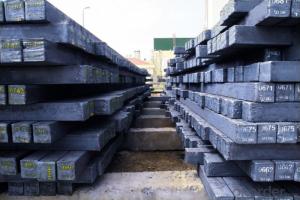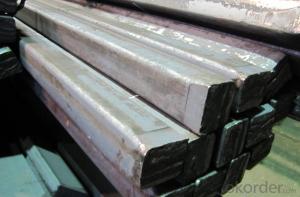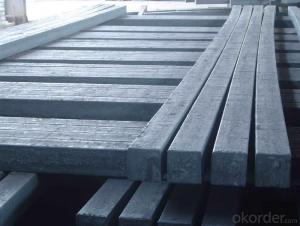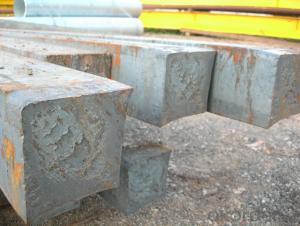Hot Rolled Steel Billet 3SP Standard 165mm
- Loading Port:
- Shanghai
- Payment Terms:
- TT OR LC
- Min Order Qty:
- 100 m.t.
- Supply Capability:
- 10000 m.t./month
OKorder Service Pledge
OKorder Financial Service
You Might Also Like
Structure of Hot Rolled Steel Billet 3SP Standard 165mm

Description of Hot Rolled Steel Billet 3SP Standard 165mm
Prepainted Rolled steel Coil is a kind of coated steel coil/sheet. With the cold rolled steel of different strength and thickness as substrate, it is produced through applying Al-Zn coat on both faces by hot dip process. In its coating, Al accounts for about 55%, Si 1.6%, while the remaining is Zn. Aluminum zinc coils enjoys both the physical protective feature and durability of Al and the electrochemical protective property of Zn. And its surface has bright silver color and regular embossed-like figure, which are highly decorative. RAL Scale Z35 Prepainted Rolled Steel Coil for Construction Roofing

Main Feature of Hot Rolled Steel Billet 3SP Standard 165mm
1.Corrosion resistance: It mainly depends on the zinc protection. When the zinc being worn,
2. Heat resistance: steel sheet has excellent heat resistance, can withstand high temperatures over 300 centigrade, and is similar with aluminized steel high temperature oxidation resistance. It often used in chimney pipes, ovens, fluorescent lighting device and the device cover.
3. Heat reflective: Galvanized steel plate heat-reflective high rate is twice as galvanized steel, often used to make insulation materials. RAL Scale Z35 Prepainted Rolled Steel Coil for Construction Roofing
Applications of Hot Rolled Steel Billet 3SP Standard 165mm
1. Construction and building: roofing; ventilating duct; handrail; partition panel;etc.
2. Electric appliance: refrigerator; washing machine; refrigerator; DVD;etc.
3.Transportation: oil tank; gas tank;road sign; etc.
4.Agriculture constructions :barn; etc.RAL Scale Z35 Prepainted Rolled Steel Coil for Construction Roofing
5.Others:vending machine; game machine; auto parts spare parts etc.
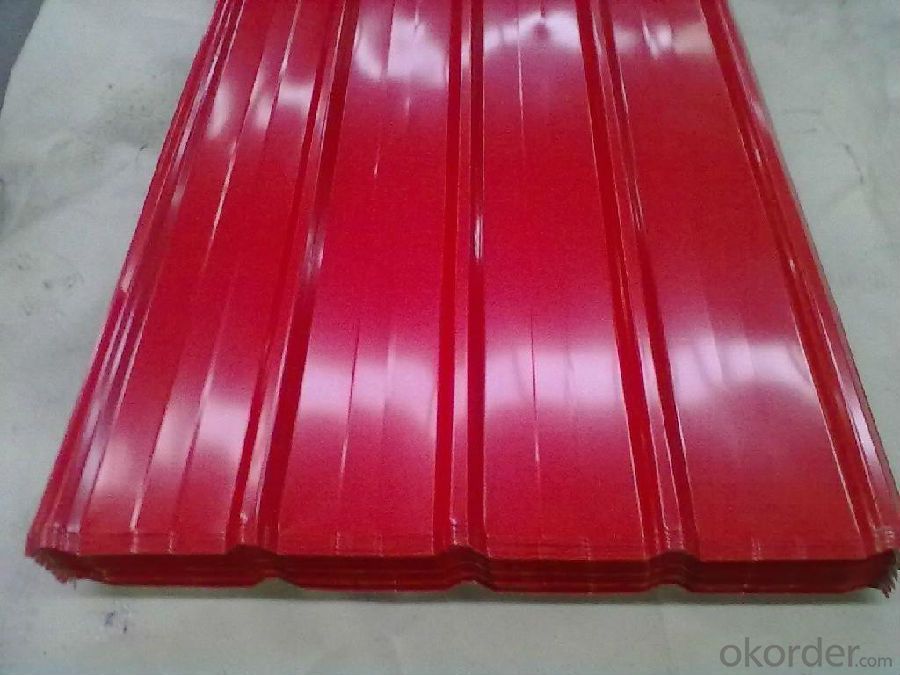
Specifications of Hot Rolled Steel Billet 3SP Standard 165mm
Product | Hot Rolled Steel Billet 3SP Standard 165mm |
Material Grade | SGCC / SGCH / DX51D+AZ, etc |
Thickness | 0.5-3.0mm |
Width | 700-1500mm |
Tolerance | Thickness: +/-0.02mm , Width:+/-2mm |
Zinc-coating | AZ30-150g/m2 |
Technique | Raw material: Hot rolled steel coil --> Cold rolled_>hot dipped galvalume |
Surface | Dried, Chromated, Unoiled,RAL Scale Z35 Prepainted Rolled Steel Coil for Construction Roofing |
Spangle | Regular spangle , small spangle, zero spangle |
ID | 508MM 610MM |
Coil weight | 25MT max |
Export package | Cardboard inner sleeves, Waterproof paper, galvanized steel covered and steel strip packed |
FAQ of Hot Rolled Steel Billet 3SP Standard 165mm
We have organized several common questions for our clients,may help you sincerely:
1. What is the minimum order quantity ?
Our MOQ is 100 mt for each size each specification. Usually we can offer discount if can buy large QTY once. RAL Scale Z35 Prepainted Rolled Steel Coil for Construction Roofing
2. How long can we receive the product after ordering?
Our general delivery time is 30 days after confirmation, but so some special orders, we have offer special delivery time
3. How to guarantee the quality of the products?
We have established the international advanced quality management system ,every link from raw material to final product we have strict quality test;We resolutely put an end to unqualified products flowing into the market. At the same time, we will provide necessary follow-up service assurance.
4. What is the payment?
We accept T/T, L/C
- Q:What are the main factors affecting the impact toughness of steel billets?
- The main factors affecting the impact toughness of steel billets include the composition of the steel, the heat treatment process, the presence of impurities or defects, the grain size and microstructure, and the temperature at which the impact test is conducted.
- Q:Can steel billets be used in the production of railway tracks?
- Yes, steel billets can be used in the production of railway tracks. Steel billets are semi-finished products that are commonly used in the manufacturing of various steel products, including railway tracks. Railway tracks require high strength and durability to withstand the weight and movement of trains. Steel billets, which are typically made from carbon steel or alloy steel, provide the necessary strength and structural integrity required for railway tracks. These billets can be further processed and shaped into rails through hot rolling or other manufacturing processes. The final rails are then installed on railway tracks to provide a smooth and safe surface for train movement. Therefore, steel billets are an essential raw material in the production of railway tracks.
- Q:What are the different shapes and sizes of steel billets?
- Steel billets are found in various shapes and sizes depending on their intended use and manufacturing method. The most frequently seen shapes of steel billets include square, rectangular, and round. Square billets are commonly employed in forging and rolling processes where they are heated and molded into different products like bars, rods, and rails. These billets have equal dimensions on all sides, creating a square shape. On the other hand, rectangular billets have longer sides and shorter ends, resembling a rectangular shape. They are often utilized in the production of structural components such as beams and columns, as well as for creating pipes and tubes. As the name implies, round billets have a cylindrical shape and are frequently used in the manufacturing of seamless pipes, axles, and shafts. Their uniform circular cross-section makes them suitable for processes involving rotary motion or requiring a strong cylindrical shape. In terms of size, steel billets can vary significantly depending on the specific requirements of the final product. Factors such as the desired end product, manufacturing process, and available equipment determine their dimensions. Common sizes range from small billets measuring approximately 100mm to 200mm in diameter or width, to larger billets exceeding 300mm in diameter or width. It is worth noting that steel billets can also be customized to meet the specific size and shape requirements of different industries. This versatility allows for the production of a wide range of steel products, serving diverse applications in the construction, automotive, and other manufacturing sectors.
- Q:How are steel billets used in the production of pump parts?
- Pump parts rely on steel billets as a vital element in their production. These semi-finished metal forms serve as the initial material for creating a variety of pump components. To begin with, steel billets are heated and then shaped into the desired form using techniques such as forging, casting, or extrusion. This process ensures that the billets are transformed into pump parts like impellers, casings, or shafts. Once shaped, the billets undergo further machining processes such as milling, drilling, and turning. These operations guarantee that the billets meet the precise dimensions and specifications required for pump parts. By undergoing these machining operations, the billets become functional components capable of effectively carrying out their intended tasks within the pump system. Furthermore, steel billets provide the necessary strength and durability to withstand the demanding conditions and pressures associated with pumping operations. The high tensile strength and corrosion resistance of steel make it an ideal material choice for pump components, ensuring their longevity and reliability. Additionally, steel billets can be treated or coated to enhance their performance characteristics. Heat treatment processes like annealing, quenching, or tempering can be applied to achieve specific mechanical properties such as improved hardness or increased resistance to wear and tear. Coatings such as galvanizing or electroplating can also be added to enhance the corrosion resistance of steel billets. In summary, steel billets play a crucial role in the production of pump parts. They provide a versatile and durable starting material that can be shaped, machined, and treated to meet the specific requirements of different pump systems. By utilizing steel billets, pump manufacturers can produce high-quality pump parts that ensure efficient and reliable pumping operations in various industries.
- Q:How are steel billets inspected for hardness?
- Steel billets are inspected for hardness using a variety of methods and techniques. One of the commonly used methods is the Rockwell hardness test. This test measures the depth of penetration of an indenter into the steel surface under a specific load. The hardness value is then determined based on the depth of penetration. The Rockwell hardness test provides a quick and reliable way to assess the hardness of steel billets. Another method used for hardness inspection is the Brinell hardness test. This test involves applying a specific load on a hardened steel ball and measuring the diameter of the indentation left on the steel surface. The hardness value is calculated based on the applied load and the diameter of the indentation. The Brinell hardness test is useful for large steel billets or when a larger area needs to be tested. Furthermore, Vickers hardness test can also be employed for inspecting the hardness of steel billets. This method utilizes a diamond pyramid-shaped indenter to create an impression on the steel surface. The diagonals of the impression are measured, and the hardness value is determined based on the applied load and the surface area of the impression. The Vickers hardness test is commonly used for materials with high hardness or small components. In addition to these traditional hardness testing methods, there are also advanced techniques available, such as ultrasonic testing and magnetic induction. Ultrasonic testing involves sending high-frequency sound waves through the steel billet and measuring the time it takes for the waves to be reflected back. Any variations in the hardness of the billet can be detected through changes in the ultrasonic waves. Magnetic induction, on the other hand, utilizes magnetic fields to assess the hardness of steel. By measuring the electrical conductivity and permeability of the steel billet, the hardness can be estimated. Overall, there are several techniques available for inspecting the hardness of steel billets, including Rockwell, Brinell, Vickers hardness tests, as well as ultrasonic testing and magnetic induction. These methods provide valuable information about the hardness properties of the billets, allowing manufacturers to ensure the quality and suitability of the steel for various applications.
- Q:How are steel billets used in the manufacturing of agricultural machinery?
- Steel billets are often used as a starting material in the manufacturing process of agricultural machinery. They are typically shaped and transformed through various machining and forging techniques to create different components like gears, shafts, brackets, and frames. These components are then assembled to build the necessary machinery for farming operations, such as tractors, tillers, harvesters, and irrigation systems. The use of steel billets ensures durability, strength, and reliability in agricultural machinery, making them capable of withstanding the demanding conditions and heavy workloads often encountered in the agricultural industry.
- Q:How are steel billets used in the production of structural steel sections?
- Steel billets are a crucial component in the production of structural steel sections. These billets serve as the primary raw material for the manufacturing process. To begin with, steel billets are melted in a furnace to create molten steel. This molten steel is then cast into billets of specific sizes and shapes, which can vary depending on the desired structural steel section to be produced. The billets are typically rectangular or square in shape. Once the steel billets have solidified, they are reheated in another furnace to a specific temperature for hot rolling. Hot rolling is a process where the billets are passed through a series of rolling mills to reduce their cross-sectional area and shape them into the desired structural steel sections. This process involves applying high pressure and temperature to the billets, which causes them to deform and elongate. The hot rolled steel sections are cooled and then undergo further processing, such as straightening, cutting, and sometimes additional heat treatment to enhance their mechanical properties. These steps ensure that the structural steel sections meet the required specifications for strength, durability, and dimensional accuracy. The structural steel sections produced from steel billets are widely used in various construction projects. They are commonly used in the construction of buildings, bridges, infrastructure, and other structures where strength and load-bearing capacity are essential. These sections can be found in beams, columns, channels, angles, and other shapes that provide the necessary support and structural integrity. Overall, steel billets play a vital role in the production of structural steel sections, serving as the starting material that undergoes a series of manufacturing processes to create the final products used in construction and other industries.
- Q:Are steel billets susceptible to corrosion?
- Yes, steel billets are susceptible to corrosion. Steel is primarily an alloy of iron and carbon, and the presence of iron makes it prone to corrosion. When exposed to moisture and oxygen, a chemical reaction occurs on the surface of the steel, leading to the formation of iron oxide, commonly known as rust. This corrosion process weakens the steel's structure and can ultimately lead to its failure. To prevent corrosion, steel billets are often coated with protective layers or treated with anti-corrosion agents. Common methods include applying a layer of zinc through a process called galvanization or coating the steel with paint or epoxy. Additionally, storing steel billets in dry environments and maintaining proper ventilation can help minimize the risk of corrosion. It is important to note that the susceptibility to corrosion can also depend on the specific composition and grade of the steel used in the billets. Certain types of stainless steel, for example, contain additional alloying elements like chromium and nickel, which provide enhanced corrosion resistance. However, even stainless steel can corrode under certain conditions, albeit at a slower rate compared to regular carbon steel. Regular inspection, maintenance, and appropriate corrosion prevention measures are crucial in ensuring the longevity and durability of steel billets.
- Q:How do steel billets contribute to the defense industry?
- Steel billets contribute to the defense industry by serving as a primary material for manufacturing various defense equipment and vehicles. These billets are used to produce armored vehicles, tanks, naval vessels, aircraft carriers, submarines, and military-grade weapons. The high strength and durability of steel make it ideal for creating protective structures and components that can withstand extreme conditions, ballistic impacts, and explosive forces. Additionally, steel billets are also utilized in the construction of defense infrastructure, such as military bases and facilities.
- Q:What are the different types of steel billet rolling mill defects?
- During the rolling process of steel billet in a rolling mill, various types of defects may occur. These defects can impact the final product's quality and performance and can have different causes. Some commonly observed defects include: 1. Surface defects: Scratches, cracks, pits, and scale are visible defects that can occur on the surface of the rolled billet. These defects can be caused by improper handling, insufficient lubrication, or excessive rolling pressures. 2. Shape defects: Deviations from the desired shape of the billet, such as bowing, twisting, or excessive tapering, are referred to as shape defects. Uneven cooling, improper alignment of the rolling mill, or incorrect rolling parameters can cause these defects. 3. Internal defects: Internal defects are not visible on the surface but can impact the structural integrity of the billet. Segregation, porosity, and inclusions are examples of internal defects. The presence of impurities in the raw material, improper heating or cooling, or inadequate quality control measures can cause these defects. 4. Dimensional defects: Deviations from the desired dimensions of the billet, such as variations in length, width, or thickness, are called dimensional defects. Improper calibration of the rolling mill, incorrect rolling parameters, or inadequate quality control measures can cause these defects. 5. Metallurgical defects: Metallurgical defects occur due to improper metallurgical processes during rolling. Grain size variations, improper grain flow, or undesirable microstructure are examples of metallurgical defects. Improper temperature control, inadequate alloying, or insufficient heat treatment can cause these defects. To ensure the production of high-quality steel billets, it is crucial for steel billet rolling mills to implement proper quality control measures. Regular inspections, testing, and monitoring during the rolling process can help identify and rectify these defects, thus minimizing their occurrence.
1. Manufacturer Overview |
|
|---|---|
| Location | |
| Year Established | |
| Annual Output Value | |
| Main Markets | |
| Company Certifications | |
2. Manufacturer Certificates |
|
|---|---|
| a) Certification Name | |
| Range | |
| Reference | |
| Validity Period | |
3. Manufacturer Capability |
|
|---|---|
| a)Trade Capacity | |
| Nearest Port | |
| Export Percentage | |
| No.of Employees in Trade Department | |
| Language Spoken: | |
| b)Factory Information | |
| Factory Size: | |
| No. of Production Lines | |
| Contract Manufacturing | |
| Product Price Range | |
Send your message to us
Hot Rolled Steel Billet 3SP Standard 165mm
- Loading Port:
- Shanghai
- Payment Terms:
- TT OR LC
- Min Order Qty:
- 100 m.t.
- Supply Capability:
- 10000 m.t./month
OKorder Service Pledge
OKorder Financial Service
Similar products
New products
Hot products
Related keywords
